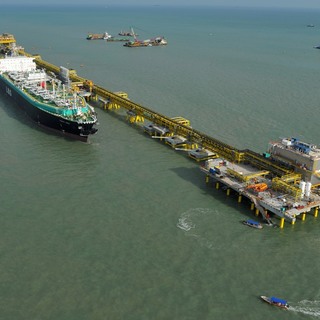
James Point Port Structures and Infrastructure Reference Design
We designed the port as multi product facility that could handle both import and export of bulk products, livestock export and possibly Ro-Ro traffic.
We designed the port as a multi product facility handling import and export of bulk products, livestock export and possibly Ro-Ro traffic. A flexible design was therefore required so that it could adapt easily to a variety of cargo types.
The wharf structure is a fully land backed structure allowing vehicles to access along its full length. An underground conveyor was developed to ensure vehicle access and avoid conveyor structures on the wharf inhibiting future use of the berth.
The structure was an open load backed wharf with a monolithic concrete deck supported on steel piles over a rock revetment protecting the load backed reclamation. Similarly the land side, utilities and drainage layouts were developed for a variety of users or cargoes in mind.
Having completed the concept development stage for the port and managed site investigations and data gathering, we delivered a reference design to enable the project to move into the construction phase.
The information from preceding investigations informed further design of the port facilities.
Our wide ranging role involved:

We have been providing engineering support to Muhibbah Engineering Bhd for the LNG Regasification Facilities Project, commencing from FEED for the LNG regas unit and the Island berth.

We were engaged to prepare designs to more than double the output of an existing barge loading facility in Kalimantan, Indonesia. The facility handles a number of different grades of coal to deliver a specified blend to each barge.

We were commissioned by Puma Energy to conduct a HAZOP Study to review the FEED safety design for the current North Vietnam Bitumen Terminal.

We were invited by a global financing and development institution to conduct a cumulative risk assessment of its three major industrial facilities in Nansha, Pearl River Delta and to review its industrial hazard risk management system.